Flame On! The Basics of Glass Torches
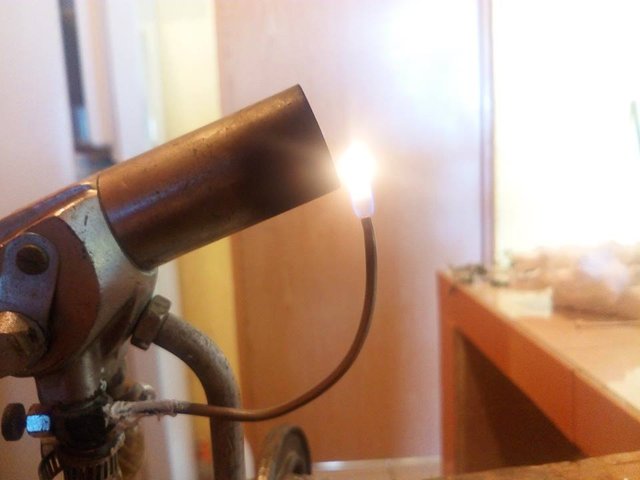
One of the most important tools to me as a glassblower, as well as any other lampworker is the torch. On first glance when unexperienced with glass, the torch is an intimidating concept. It's essentially a small flame thrower mounted to a desk or a counter. Lots can go wrong, everything from rare catastrophic explosion to something as simple as the wind blowing a large hot flame onto your hand, as has happened to me.
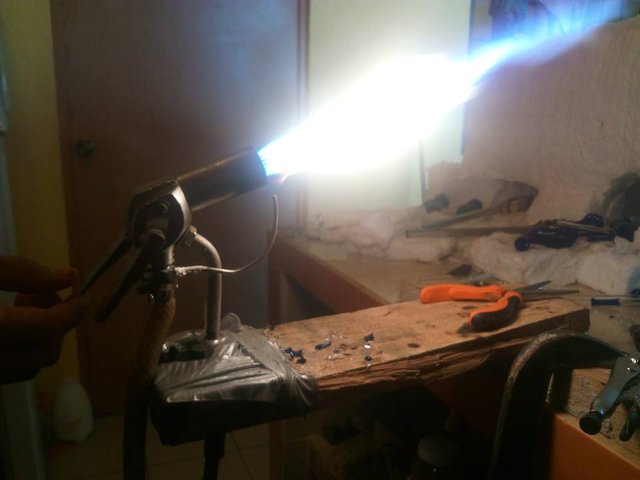
If you have all the right components in good condition and set everything up correctly, the chances of any sort of catastrophic failure are relatively low. Despite being intimidating, it's one of my favorite things as a glassblower. I wield the power of fire to melt glass and make it do what I want, that's pretty amazing at the end of the day. I use an old Fisher brand scientific bench burner, the photo above is of it with it's surface mix flame on, something I'll explain more below.
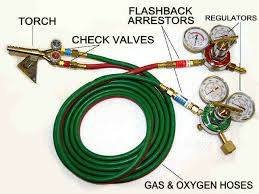
There are actually several more components to a torch setup other than the torch that are literally essential for it to function safely. Flashback arresters are small but absolutely essential. They're designed to snuff any fire that might flash back through the lines into the tank. These tiny pieces have saved so many lives, it's not even funny. You need one for each gas, although the real danger is with highly flammable propane.
Regulators are also essential, these regulate the pressure of the gas coming out of the tank. Every torch has it's own sweet spot for what it likes to have it's regulators set at. My torch likes to be set at less than 10 pounds per square inch of oxygen and less than 5 pounds per square inch of propane. Tanks are needed too, at least one of each type in a setup. There are cool projects out there like solar powered hydrogen torches, but that's a bit of a pricey venture from my understanding. Honestly, glassblowing in general happens to be a pricey venture. Hoses are needed to connect everything, as are fittings to keep everything connected.
I mentioned a term above, surface mix. What that means is that that particular torch keeps its gasses separate until they meet at the surface and ignite. This generally gives you a large, soft, hot flame good for covering large areas. This is ideal for colors, especially difficult colors known to boil or otherwise not stay true while you work with the glass. Soft glass lampworkers prefer these torches because the flame is much gentler and slower velocity. This makes it much less likely than a premix flame to crack the glass.
What's a premix torch? Just a different sort of torch, where the gasses mix in the barrel before they leave the torch. This makes for a much more concentrated flame great for detail work. This flame is also penetrating comparted to a surface mix as it has much higher velocity than a surface mix, so more care needs to be taken with colors and when working with anything that might crack.
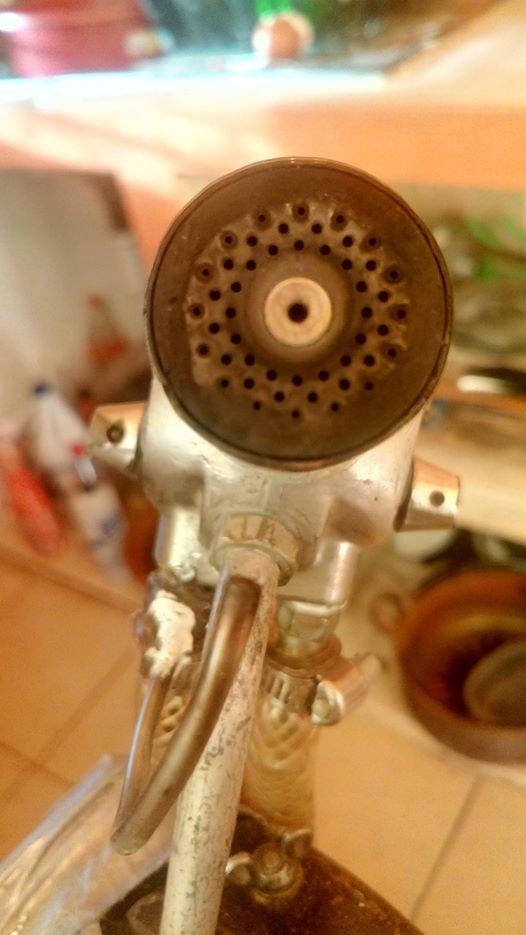
There's a lot of debate in certain forums about which is better, surface mix or premix? At the end of the day, it depends only on what glass you intend to work. If you're starting out in borosilicate and do not have the luxury of a torch with both flames, go for premix. You can do just about everything on a smaller scale that you can with the large one, with more control for detail work. My torch has what's called a premix centerfire, which means the center of the torch is actually a separate premix torch. I also have a surface mix outerfire. The dots around the center in the photo above are the surface mix torch.
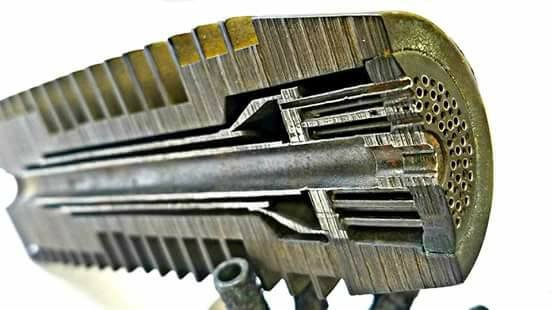
The photo above and the next few following were shared a few days ago on a glassblowing group on Facebook in reference to buying Bethlehem PM2D bench burners used. These are pretty common workhorse burners but they have a tendency to melt down at the torch face, making them no good after a long time. This takes years and years of hard use. I like these photos because they show the inside of a torch similar to mine, with a premix centerfire and a surface mix outerfire.
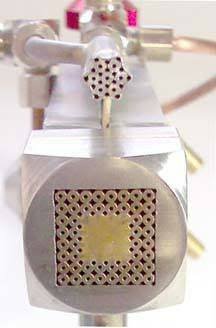
There are other configurations that meet the same end, meet the Nortel Redmax. It has a premix on top and a surface mix below. This is just one variation of this design.
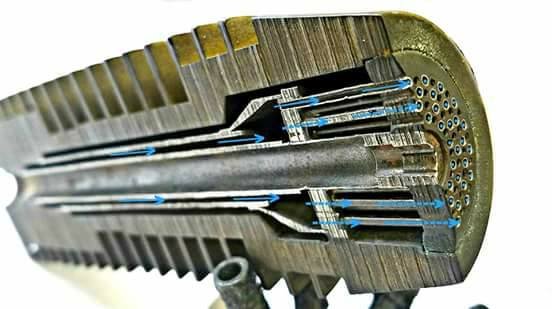
The blue arrows show the pathways and direction of the oxygen gas as it travels through the bethlehem surface mix burner. Note, it's kept separate all the way until the face.
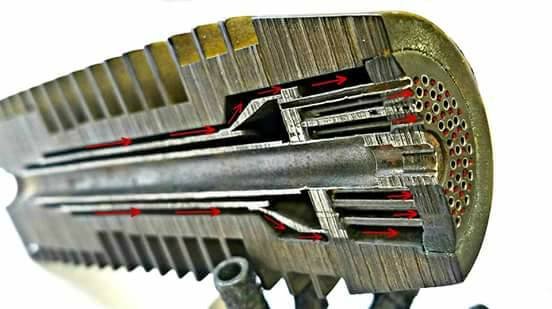
The red lines show the propane lines, again, kept separate from the oxygen.
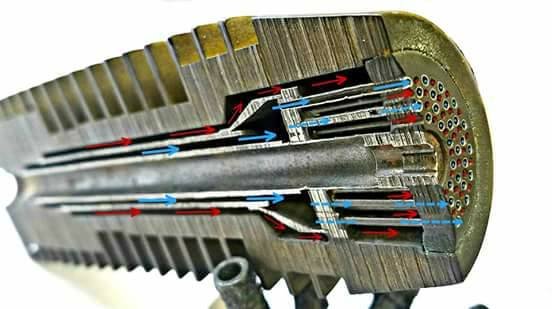
This photo shows both lines together, kept separate all the way until they reach the face. The channel down the middle is the premix centerfire where the gasses intermix before exiting the face of the torch.
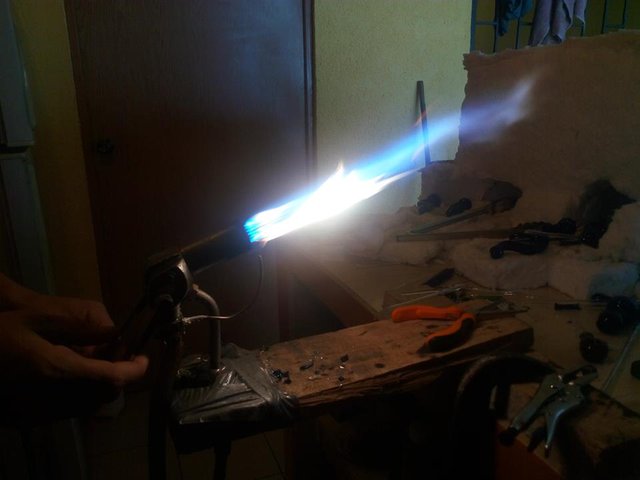
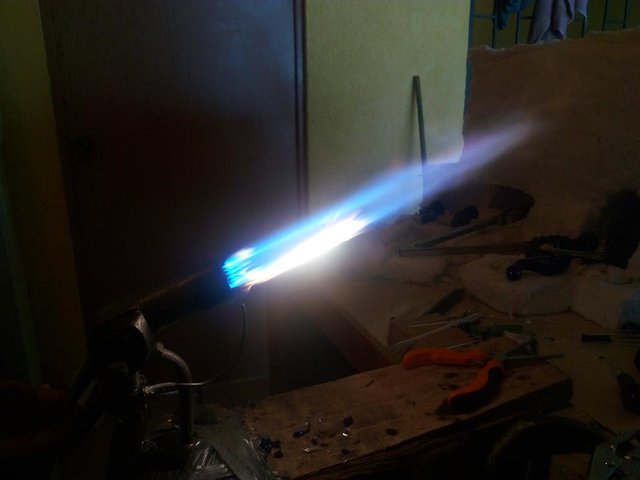
My torch has been described by many as a mighty little burner, and it honestly is. It's also been described as what would happen if a Carlisle Torch and a Bethlehem had a baby, but only glassblowers will get that reference. Basically, it's a small torch with a lot of capability. It's made for scientific glassblowing so everything from that giant dragon breath flame all the way down to a tiny pinpoint is possible. It's pretty cheap as far as torches are concerned, they're generally well made and they're efficient on gas, important when you're starting out.
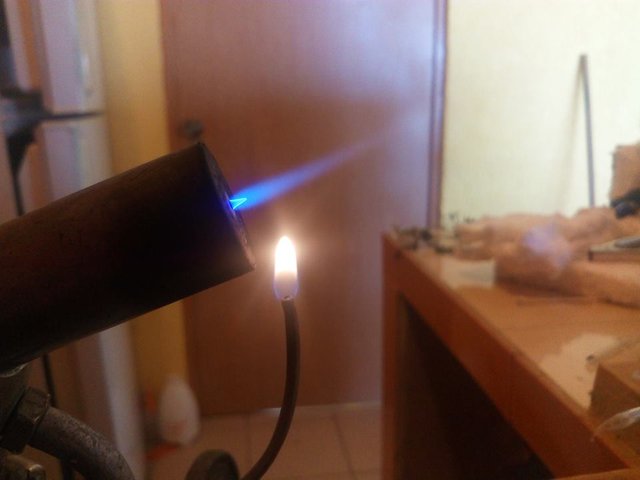
This is that tiny pinpoint, super precise and handy for when you need it.
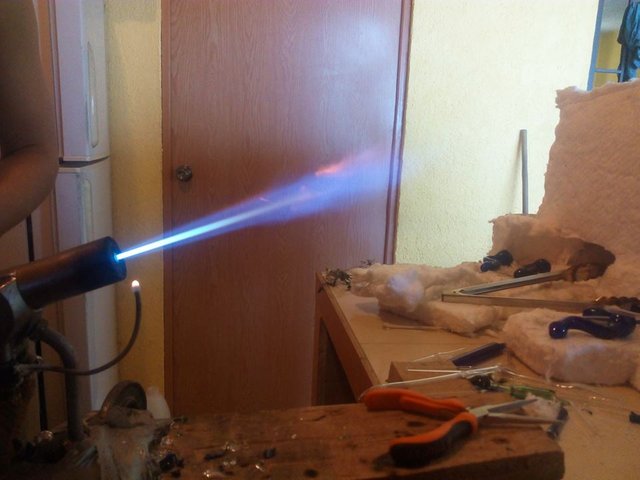
This picture shows the largest flame I can get with the centerfire torch. It doesn't look like a whole lot but I can make some pretty thick pipes and sherlocks on lower settings of that torch than that. I've barely used the large torch, only really recently experimenting with that. The large torch is turned on by pushing down on the paddles instead of pulling up. Most torches have knobs, by the way, the paddles are a feature of my type of torch, one that I really love.
The only real limitation we've found with the paddles are that you can't have both torches on at the same time with how things are currently designed, although we've heard you can modify things to make that happen. As for use, the paddles are intuitive and much easier in my opinion than knobs. I use my chest on a regular basis to adjust my flame very slight amounts without having to remove the glass from the flame, which is pretty nice.
The pilot light is rare too, something that any glassblower can rig to their torch though, honestly. It's nice in my house because my flame gets blown out a lot at the right time of day from the wind. I don't need a ventilation setup here, I often have too much airflow in my studio (kitchen, for now). My house is set up in such a way where wind is always flowing in all directions, even late at night especially this time of year. We take advantage of the winds coming off the bay, up the mountain and into my open concept house, getting rid of the need of fans, air conditioning and ventilation. My house is often so windy I'm not able to smell the food I'm cooking in the kitchen, while standing in front of the stove. The stove is basically in the corner too, the least windy spot but it's honestly fairly well ventilated despite not having any equipment. The torch is in what's the windiest part of the kitchen, to take advantage of the free ventilation.
So at a glance, torches are a bit intimidating when you know nothing about them. I did a demonstration in front of friends recently, and my one friend was borderline scared of the torch, albeit intrigued. Whenever I'd turn up the flame, she'd jump and step back, but she'd still stay close enough to watch and ask questions. She was easily one of the funniest people in terms of reactions to me blowing glass. She asked me if I felt powerful, and honestly I do when I stand behind that torch looking down into that flame.
The torch I have has been great to start with, as it's simple enough for a newb to use while having the capabilities of a complex professional torch. I like that incorporates both types of torches, giving me a lot of different options to use when I'm working. I like the unique features it has as well and honestly have a bond with the torch already even though I've only used it a few months.
So long as they're setup correctly with all the right components, they're perfectly safe to use so long as the artist is aware enough to use it. Things can happen pretty quickly that make what many would consider a simple mistake into a pretty severe injury. Burns are no fun, neither are explosions when you happen to standing right next to the explosive device. So if you decide to wield a torch, take care in terms of safety, your life is in your hands.
Burns are indeed no fun, but an oft-overlooked natural remedy for burns is to use lavender oil. Get a good quality therapeutic grade lavender oil and apply it directly to a burn, and it can help reduce pain, accelerate healing, and prevent scarring. I've seen it do wonders firsthand, and experienced it myself. :)
You're sure doing some cool things with hot glass...
Have you ever heard of Brown's Gas? It's a perfectly balanced mix of hydrogen and oxygen because it has been electrolyzed, from water, on demand as it is used. Only one hose to the torch, both gases flow together. The flame is "cool" until it actually contacts your material.
I've fiddled with it quite a bit, but I'm no glass blower... however, I know of at least one maker of glass artifacts that swears by it.
Thanks for your fascinating stories of glassmaking; following you now! 😄😇😄

This post has been ranked within the top 80 most undervalued posts in the first half of Dec 31. We estimate that this post is undervalued by $3.01 as compared to a scenario in which every voter had an equal say.
See the full rankings and details in The Daily Tribune: Dec 31 - Part I. You can also read about some of our methodology, data analysis and technical details in our initial post.
If you are the author and would prefer not to receive these comments, simply reply "Stop" to this comment.